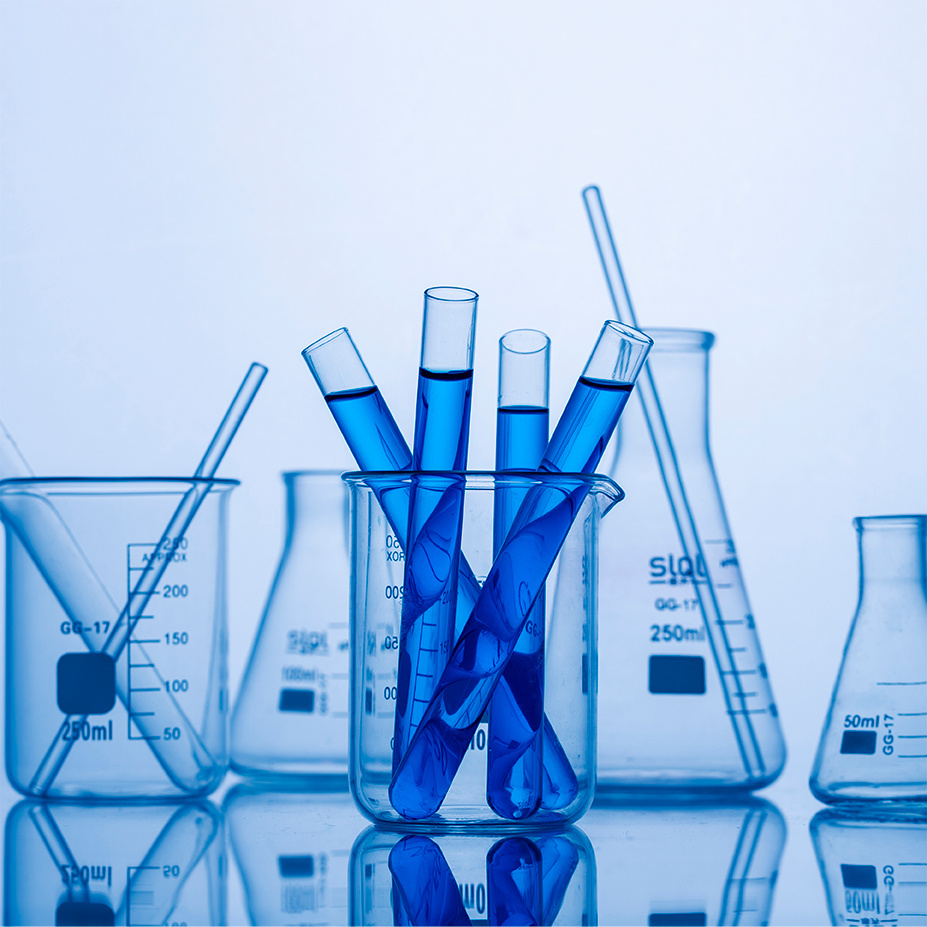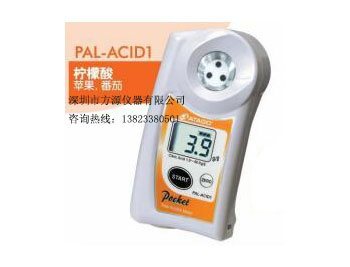推荐厂家
暂无
暂无
需要购买原儿茶醛 红花苷 Crocin 红花素 羟基红花黄色素C 羟基红花黄色素K 丹酚酸B 10羟基-a-葵烯酸,请问哪里有卖?
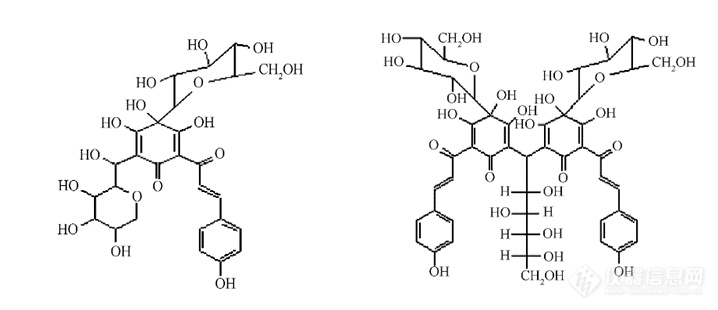
[font='黑体'][size=48px]食品添加剂——红花黄[/size][/font][font='times new roman'][size=24px]肖淑玲[/size][/font][font='times new roman'][size=24px]2021.7[/size][/font][align=center][/align][font='calibri']摘要:[/font][font='calibri']红花是[/font][font='times new roman']菊科植物的干燥花[/font][font='times new roman'],[/font][font='calibri']是具有多种疗效的名贵中草药。从红花中提取的红花黄色素不仅是重要的天然食用色素,也具有保护心脑血管、免疫抑制等多种药理功能,一直以来都是色素界的研究热点。本文从理化性质、稳定性、制备方法、应用研究及检测方法等多方面综述了红花黄色素,帮助读者全面了解红花黄色素,尤其是了解如何运用国标检测方法测定红花黄食品添加剂含量。[/font][font='宋体']关键词:[/font][font='宋体'][size=16px]食品添加剂[/size][/font][font='宋体'][size=16px],[/size][/font][font='宋体'][size=16px]红花黄[/size][/font][font='宋体'][size=16px],[/size][/font][font='宋体'][size=16px]色素[/size][/font]1、 [font='calibri'][size=18px]引言[/size][/font][font='times new roman']红花是中国重要的中草药,为菊科植物的干燥花,内含红花红色素和红花黄色素两种色素,其性温、味辛,具有活血通经、祛瘀止痛、降低胆固醇、降血压等功效,主要用于月经不调、痛经、经闭、跌打损伤,对冠心病、传染性肝炎等疾病亦有一定的疗效。红花黄色素是从红花的花瓣中提取出的天然黄色素,为查耳酮类化合物。[/font][font='times new roman']红花黄色素是[/font][font='times new roman']我国[/font][font='times new roman']食用天然色素[/font][font='times new roman']的一种[/font][font='times new roman'],主要[/font][font='times new roman']成分[/font][font='times new roman']为红花黄色素[/font][font='times new roman']A[/font][font='times new roman']。研究发现红花黄色素[/font][font='times new roman']不仅[/font][font='times new roman']具有色泽艳丽[/font][font='times new roman']、[/font][font='times new roman']耐高压、耐低温、耐光、耐酸、耐还原和抗微生物等优点,而且还有扩张冠状动脉、抗氧化、保护心肌、降血压、免疫抑制和脑保护等多种药理功能[/font][font='times new roman'],已经被归为国家级新药[/font][font='times new roman']。[/font][font='times new roman']红花黄色素因其优良的着色性能和独特的药理功能,一直在我国色素界大放异彩,饱受关注。[/font]2、 [font='宋体'][size=18px]理化性质[/size][/font][font='times new roman'][color=#333333][back=#ffffff]红花黄色素为黄色或棕黄色粉末,熔点[/back][/color][/font][font='times new roman'][color=#333333][back=#ffffff]230℃[/back][/color][/font][font='times new roman'][color=#333333][back=#ffffff]。它具有亲水性,[/back][/color][/font][font='times new roman'][color=#333333][back=#ffffff]易溶于水、稀乙醇、稀丙二醇,[/back][/color][/font][font='times new roman'][color=#333333][back=#ffffff]其水溶液呈鲜艳黄色,不产生沉淀,[/back][/color][/font][font='times new roman'][color=#333333][back=#ffffff]几乎不溶于无水乙醇,不溶于乙醚、石油醚、油脂、氯仿等有机溶剂[/back][/color][/font][font='times new roman'][color=#333333][back=#ffffff]。[/back][/color][/font][font='times new roman'][color=#333333][back=#ffffff]红花黄色素的[/back][/color][/font][font='times new roman'][color=#333333][back=#ffffff]颜色随[/back][/color][/font][font='times new roman'][color=#333333][back=#ffffff]pH [/back][/color][/font][font='times new roman'][color=#333333][back=#ffffff]的不同而改变。在[/back][/color][/font][font='times new roman'][color=#333333][back=#ffffff]pH [/back][/color][/font][font='times new roman'][color=#333333][back=#ffffff]值[/back][/color][/font][font='times new roman'][color=#333333][back=#ffffff]2[/back][/color][/font][font='times new roman'][color=#333333][back=#ffffff]-[/back][/color][/font][font='times new roman'][color=#333333][back=#ffffff]7[/back][/color][/font][font='times new roman'][color=#333333][back=#ffffff]范围的酸性溶液中[/back][/color][/font][font='times new roman'][color=#333333][back=#ffffff]颜色稳定性强[/back][/color][/font][font='times new roman'][color=#333333][back=#ffffff],呈黄色[/back][/color][/font][font='times new roman'][color=#333333][back=#ffffff];[/back][/color][/font][font='times new roman'][color=#333333][back=#ffffff]在[/back][/color][/font][font='times new roman'][color=#333333][back=#ffffff]碱性溶液中呈黄橙色,耐光性好,耐热性稍差。[/back][/color][/font][font='times new roman'][color=#333333][back=#ffffff]红花黄色素[/back][/color][/font][font='times new roman'][color=#333333][back=#ffffff]毒性极低、着色力强、色调稳定[/back][/color][/font][font='times new roman'][color=#333333][back=#ffffff];[/back][/color][/font][font='times new roman'][color=#333333][back=#ffffff]在红花中含量为[/back][/color][/font][font='times new roman'][color=#333333][back=#ffffff]20% ~ 30%[/back][/color][/font][font='times new roman'][size=13px][1][/size][/font][font='times new roman'][color=#333333][back=#ffffff]。[/back][/color][/font][font='宋体']红花黄色素结构如下图[/font][font='宋体']一[/font][font='宋体'],为[/font][font='times new roman']查耳酮类化合物。[/font][font='times new roman']红花黄色素[/font][font='times new roman']A[/font][font='times new roman']分子式为[/font][font='times new roman']C[/font][font='times new roman'][size=13px]27[/size][/font][font='times new roman']H[/font][font='times new roman'][size=13px]32[/size][/font][font='times new roman']O[/font][font='times new roman'][size=13px]16[/size][/font][font='times new roman'],相对分子质量为[/font][font='times new roman']612.5[/font][font='times new roman']。红花黄色素[/font][font='times new roman']B[/font][font='times new roman']分子式为[/font][font='times new roman']C[/font][font='times new roman'][size=13px]48[/size][/font][font='times new roman']H[/font][font='times new roman'][size=13px]54[/size][/font][font='times new roman']O[/font][font='times new roman'][size=13px]27[/size][/font][font='times new roman'],相对分子质量为[/font][font='times new roman']1062[/font][font='times new roman'][size=13px][[/size][/font][font='times new roman'][size=13px]2][/size][/font][font='times new roman']。[/font][font='times new roman']商品化的红花黄产品应以符合国家标准的红花黄为原料,可添加食用糊精等食品辅料而制成。[/font][img]https://ng1.17img.cn/bbsfiles/images/2021/08/202108042202375558_3661_1608728_3.png[/img][align=center][font='宋体']图[/font][font='宋体']1[/font][font='宋体'].[/font]红花黄色素结构式:图左为红花黄色素A,图右为红花黄色素B[font='times new roman'][size=16px][[/size][/font][font='times new roman'][size=16px]2][/size][/font][/align]3、 [font='宋体'][size=18px]稳定性[/size][/font][font='times new roman']红花黄色素的稳定性,主要表现在其水溶性好、热稳定性好、金属离子对其影响小等[/font][font='times new roman']多个[/font][font='times new roman']方面。[/font][font='times new roman']研究表明,红花黄色素易溶于水、稀乙醇等强极性溶剂,难溶于无水乙醇、丙酮等弱极性有机溶剂。[/font][font='times new roman']光照或日晒对红花黄色素有一定的影响,[/font][font='times new roman']应该避光保存。[/font][font='times new roman']但[/font][font='times new roman']它[/font][font='times new roman']不受紫外光的影响,其耐光性较好。[/font][font='times new roman']p[/font][font='times new roman']H[/font][font='times new roman']3. 4[/font][font='times new roman']时,[/font][font='times new roman']10[/font][font='times new roman']0°C[/font][font='times new roman']加热[/font][font='times new roman']1 h[/font][font='times new roman']保存率在[/font][font='times new roman']80%[/font][font='times new roman']以上,说明其耐热性好[/font][font='times new roman'][size=13px][[/size][/font][font='times new roman'][size=13px]1][/size][/font][font='times new roman']。[/font][font='times new roman']但[/font][font='times new roman']红花黄色素[/font][font='times new roman']热稳定性不好[/font][font='times new roman'],当温度高于[/font][font='times new roman']60[/font][font='times new roman'] °C[/font][font='times new roman'], [/font][font='times new roman']加热一定时间后[/font][font='times new roman'], [/font][font='times new roman']羟基红花黄色素[/font][font='times new roman']A[/font][font='times new roman']就会发生水解[/font][font='times new roman'][size=13px][[/size][/font][font='times new roman'][size=13px]3[/size][/font][font='times new roman'][size=13px]][/size][/font][font='times new roman']。[/font][font='times new roman']经[/font][font='times new roman']Ca[/font][font='times new roman']、[/font][font='times new roman']Mg[/font][font='times new roman']等金属离子对其影响[/font][font='times new roman']的实验[/font][font='times new roman']结果表明,[/font][font='times new roman']Na[/font][font='times new roman'][size=13px]+[/size][/font][font='times new roman']、[/font][font='times new roman']Zn[/font][font='times new roman'][size=13px]2+[/size][/font][font='times new roman']、[/font][font='times new roman']Ca[/font][font='times new roman'][size=13px]2+[/size][/font][font='times new roman']、[/font][font='times new roman']Sn[/font][font='times new roman'][size=13px]2+[/size][/font][font='times new roman']对色素有增色作用,色素对[/font][font='times new roman']Fe[/font][font='times new roman'][size=13px]3+[/size][/font][font='times new roman']、[/font][font='times new roman']Cu[/font][font='times new roman'][size=13px]2+[/size][/font][font='times new roman']、[/font][font='times new roman']Vc[/font][font='times new roman']较敏感。[/font][font='times new roman']F[/font][font='times new roman']e[/font][font='times new roman'][size=13px]2+[/size][/font][font='times new roman']对色素影响较大[/font][font='times new roman'], [/font][font='times new roman']使其颜色变暗[/font][font='times new roman'], [/font][font='times new roman']且吸光度峰值随[/font][font='times new roman']F[/font][font='times new roman']e[/font][font='times new roman'][size=13px]2[/size][/font][font='times new roman'][size=13px]+[/size][/font][font='times new roman']浓度增高而向紫外光移动[/font][font='times new roman'], [/font][font='times new roman']还会产生乳浊液。蔗糖、淀粉、柠檬酸在短时间内能与色素共存,食盐、蔗糖、[/font][font='times new roman']H[/font][font='times new roman'][size=13px]2[/size][/font][font='times new roman']O[/font][font='times new roman'][size=13px]2[/size][/font][font='times new roman']、抗坏血酸、亚硫酸钠等一定浓度的溶液除亚硫酸钠有轻微的减色作用,糖、盐等均有不同的增色作用。色素对氧化剂较稳定[/font][font='times new roman'],[/font][font='times new roman']但还原剂对色素影响较大[/font][font='times new roman']。[/font][font='times new roman']因此[/font][font='times new roman'],[/font][font='times new roman']建议在使用色素时应避免与还原剂一起使用[/font][font='times new roman']。[/font][font='times new roman'][size=13px][[/size][/font][font='times new roman'][size=13px]1][/size][/font][font='times new roman'][size=13px][[/size][/font][font='times new roman'][size=13px]4][/size][/font][font='times new roman']提取方法对红花黄色素稳定性也有很大影响,红花黄色素不易在高温下提取或保存。黄宇玫等[/font][font='times new roman']人[/font][font='times new roman'][size=13px][[/size][/font][font='times new roman'][size=13px]5][/size][/font][font='times new roman']通过单因素和正交实验方法,对提取温度、浸取时间、溶剂用量进行考察,得出实验条件为:分别加[/font][font='times new roman']20[/font][font='times new roman']倍量的水提取[/font][font='times new roman']2[/font][font='times new roman']次[/font][font='times new roman'], [/font][font='times new roman']在[/font][font='times new roman']40[/font][font='times new roman'] °C[/font][font='times new roman']下[/font][font='times new roman'], 2[/font][font='times new roman']次浸取时间分别为[/font][font='times new roman']12 h[/font][font='times new roman']和[/font][font='times new roman']4 h[/font][font='times new roman'],[/font][font='times new roman']过滤[/font][font='times new roman'],[/font][font='times new roman']合并滤液。在此实验条件下,红花黄色素具有较好的稳定性。文章也指出,目前除了采用上述的提取方法对色素进行提取以提高色素稳定性外[/font][font='times new roman'], [/font][font='times new roman']主要的措施还有:加入稳定剂、抗氧化剂、金属离子封锁剂或天然色素的改性。[/font][font='times new roman']开发新的提取方法对提高所得色素的稳定性也具有重要意义,[/font][font='times new roman']如酶工程法得到的有效成分较其他方法就会更加稳定。[/font]4、 [font='宋体'][size=18px]制备方法[/size][/font]1. [font='宋体'][size=16px]传统方法[/size][/font][font='times new roman']传统的提取方法为[/font][font='times new roman']:[/font][font='times new roman']水提取法、有机溶剂沉淀精制法。主要操作方法就是把红花弄碎后用蒸馏水将其浸泡[/font][font='times new roman'], [/font][font='times new roman']然后经过过滤[/font][font='times new roman'], [/font][font='times new roman']得到浓缩液[/font][font='times new roman'],[/font][font='times new roman']将浓缩液中的沉淀与纯液体进行离心分离、干燥、粉碎。但是过去的实验[/font][font='times new roman']已经[/font][font='times new roman']发现应用传统的方式提取得到的成品的浓度不是很高[/font][font='times new roman'], [/font][font='times new roman']含有很多的杂质[/font][font='times new roman'], [/font][font='times new roman']不利于保存。[/font][font='times new roman']经过不断的改进[/font][font='times new roman'], [/font][font='times new roman']研究人员[/font][font='times new roman']不断完善了传统的溶剂提取方法[/font][font='times new roman'], [/font][font='times new roman']目前最理想的提取方法为[/font][font='times new roman']:[/font][font='times new roman']选择溶剂为[/font][font='times new roman']pH 8.9[/font][font='times new roman']的水溶液[/font][font='times new roman'], [/font][font='times new roman']液料比[/font][font='times new roman']25 mL/g[/font][font='times new roman'],[/font][font='times new roman']将红花放于[/font][font='times new roman']73 °C[/font][font='times new roman']下进行提取,一共要提取[/font][font='times new roman']3[/font][font='times new roman']次[/font][font='times new roman'], [/font][font='times new roman']每次浸泡的时间一定要充足[/font][font='times new roman'], [/font][font='times new roman']掌握在[/font][font='times new roman']98min[/font][font='times new roman']左右[/font][font='times new roman'], [/font][font='times new roman']满足了这些提取条件[/font][font='times new roman'], [/font][font='times new roman']得到的黄色素的成品质量很好[/font][font='times new roman'][size=13px][6][/size][/font][font='times new roman']。[/font]2. [font='宋体'][size=16px]大孔吸附树脂法[/size][/font][font='calibri']大[/font][font='times new roman']孔吸附树脂是[/font][font='times new roman']一类新型的非离子型有机高聚物吸附剂[/font][font='times new roman'],它[/font][font='times new roman']具有吸附容量大、选择性好、吸附速度快、解析容易、可反复使用等优点,[/font][font='times new roman']目前作为理想的黄色素提取法在广泛应用中。[/font][font='times new roman']彭永芳等人[/font][font='times new roman'][size=13px][[/size][/font][font='times new roman'][size=13px]7][/size][/font][font='times new roman']研究发现[/font][font='times new roman']将[/font][font='times new roman']AB-8[/font][font='times new roman']树脂作吸附剂[/font][font='times new roman'], [/font][font='times new roman']洗脱剂用[/font][font='times new roman']80 %[/font][font='times new roman']的乙醇[/font][font='times new roman'], [/font][font='times new roman']这样提取的成品质量较传统法好,产品杂质少,色价高,成本较低,工艺简单,收率高达干花重的[/font][font='times new roman']23. 3 %[/font][font='times new roman']。同时表明,[/font][font='times new roman']AB-8[/font][font='times new roman']树脂稳定性好,使用[/font][font='times new roman']17[/font][font='times new roman']次后其吸附率仅降低[/font][font='times new roman']2. 32 % [/font][font='times new roman']。因此,该方法适合红花黄色素的分离纯化。[/font]3. [font='宋体'][size=16px]超声波辅助提取[/size][/font][font='宋体'][size=16px][[/size][/font][font='宋体'][size=16px]8[/size][/font][font='宋体'][size=16px]][/size][/font][font='times new roman']红花黄色素[/font][font='times new roman']在高温下不够稳定,[/font][font='times new roman']超声辅助提取可以避免常规溶剂提取由于提取温度高对[/font][font='times new roman']热不稳定性[/font][font='times new roman']物质的破坏[/font][font='times new roman'],[/font][font='times new roman']且具有节能、省时、溶剂用量少、提取效率高等优点[/font][font='times new roman'], [/font][font='times new roman']目前已[/font][font='times new roman']被较多的应用于红花中黄色素的提取。[/font][font='times new roman']肖艳华[/font][font='times new roman']等人[/font][font='times new roman']研究了红花中黄色素[/font][font='times new roman']A[/font][font='times new roman']的超声提取工艺[/font][font='times new roman'],[/font][font='times new roman']结果表明[/font][font='times new roman'],[/font][font='times new roman']影响红花黄色素[/font][font='times new roman']A[/font][font='times new roman']超声辅助提取[/font][font='times new roman']因素[/font][font='times new roman']的主次顺序为[/font][font='times new roman']:[/font][font='times new roman']超声时间[/font][font='times new roman'][/font][font='times new roman']乙醇浓度[/font][font='times new roman'][/font][font='times new roman']提取温度[/font][font='times new roman'][/font][font='times new roman']溶剂用[/font][font='times new roman']量,[/font][font='times new roman']最佳提取工艺条件为[/font][font='times new roman']:[/font][font='times new roman']质量分数[/font][font='times new roman']70 %[/font][font='times new roman']乙醇为溶剂[/font][font='times new roman'],[/font][font='times new roman']提取温度[/font][font='times new roman']50 [/font][font='times new roman']°C[/font][font='times new roman'],[/font][font='times new roman']料液比[/font][font='times new roman']1[/font][font='times new roman']:[/font][font='times new roman']10[/font][font='times new roman'],[/font][font='times new roman']超声时间[/font][font='times new roman']20 min[/font][font='times new roman']。[/font][font='times new roman']此工艺条件下[/font][font='times new roman'], [/font][font='times new roman']红花黄色素[/font][font='times new roman']A[/font][font='times new roman']的提取率为[/font][font='times new roman']11.23 %[/font][font='times new roman']。[/font][font='times new roman']虽然超声辅助提取采用全物理过程[/font][font='times new roman'], [/font][font='times new roman']无任何污染[/font][font='times new roman'], [/font][font='times new roman']是一条理想的提取红花黄色素的途径[/font][font='times new roman'], [/font][font='times new roman']但由于超声提取设备的研发相对滞后[/font][font='times new roman'], [/font][font='times new roman']离实现[/font][font='times new roman']大规模[/font][font='times new roman']工业化生产还有较大距离。[/font]4. [font='宋体'][size=16px]微波辅助提取[/size][/font][font='宋体'][size=16px][[/size][/font][font='宋体'][size=16px]8[/size][/font][font='宋体'][size=16px]][/size][/font][font='times new roman']微波辅助提取是基于微波具有[/font][font='times new roman']良好的[/font][font='times new roman']吸收性、穿透性[/font][font='times new roman'],[/font][font='times new roman']可对原料和提取溶剂均匀加热[/font][font='times new roman'],[/font][font='times new roman']从而加速活性成分的溶出。微波辅助提取红花黄色素不仅无污染、成本低、且提取率高、提取时间短、节约能源[/font][font='times new roman'], [/font][font='times new roman']值得深入研究。[/font][font='times new roman']但是加热时温度对活性成分或许有影响,仍需探索。[/font]5. [font='宋体'][size=16px]酶辅助提取[/size][/font][font='宋体'][size=16px][[/size][/font][font='宋体'][size=16px]8][/size][/font][font='times new roman']酶辅助提取利用各种酶[/font][font='times new roman']有效[/font][font='times new roman']分解原料的细胞壁及细胞间质中的纤维素、半纤维素和果胶等物质[/font][font='times new roman'], [/font][font='times new roman']减少传质阻力[/font][font='times new roman'], [/font][font='times new roman']促进活性成分的溶出。[/font][font='times new roman']杜辉等采用[/font][font='times new roman']1[/font][font='times new roman']:[/font][font='times new roman']1[/font][font='times new roman']纤维素酶与果胶酶复合酶辅助提取红花中黄色素[/font][font='times new roman'],[/font][font='times new roman']通过响应面法分析得到[/font][font='times new roman']:[/font][font='times new roman']酶用量对红花黄色素提取率有极显著影响[/font][font='times new roman'],[/font][font='times new roman']pH[/font][font='times new roman']、酶用量与酶解温度交互作用、[/font][font='times new roman']p[/font][font='times new roman']H[/font][font='times new roman']与酶解温度交互作用对提取率有显著影响。其研究得出的优化提取工艺为:酶解温度[/font][font='times new roman']47[/font][font='times new roman'] °[/font][font='times new roman']C, pH[/font][font='times new roman']值[/font][font='times new roman']4.7[/font][font='times new roman'],[/font][font='times new roman']酶解时间[/font][font='times new roman']2.0 h[/font][font='times new roman'],[/font][font='times new roman']酶用量[/font][font='times new roman']0.64%[/font][font='times new roman'][size=13px][[/size][/font][font='times new roman'][size=13px]9[/size][/font][font='times new roman'][size=13px]][/size][/font][font='times new roman']。[/font][font='times new roman']酶辅助提取方法具有提取率高、提取条件温和及有效成分理化性质稳定的特点。但是该方法相对成本较高,应用规模尚小。[/font]6. [font='calibri'][size=16px]闪式提取[/size][/font][font='calibri'][size=16px][[/size][/font][font='calibri'][size=16px]8[/size][/font][font='calibri'][size=16px]][/size][/font][font='times new roman']闪式提取[/font][font='times new roman']可[/font][font='times new roman']在室温下[/font][font='times new roman'], [/font][font='times new roman']依靠闪式提取器的高速机械剪切力和超动分子渗透技术[/font][font='times new roman'],[/font][font='times new roman']使活性成分快速达到在提取剂与原料组织中平衡[/font][font='times new roman'],[/font][font='times new roman']再通过过滤达到提取分离[/font][font='times new roman']。[/font][font='times new roman']具有溶剂用量少[/font][font='times new roman'],[/font][font='times new roman']快速、安全、节能、高效等优点[/font][font='times new roman'], [/font][font='times new roman']极具开发应用前景。[/font]7. [font='宋体'][size=16px]减压提取[/size][/font][font='宋体'][size=16px][[/size][/font][font='宋体'][size=16px]8[/size][/font][font='宋体'][size=16px]][/size][/font][font='times new roman']减压提取是[/font][font='times new roman']一种新型提取方法,[/font][font='times new roman']采用在常规提取器上加装真空系统[/font][font='times new roman']的方法[/font][font='times new roman'], [/font][font='times new roman']使提取操作[/font][font='times new roman']在[/font][font='times new roman']负压状态下进行[/font][font='times new roman'],从而[/font][font='times new roman']降低提取剂沸点[/font][font='times new roman'],[/font][font='times new roman']使提取剂在低温下沸腾[/font][font='times new roman'],[/font][font='times new roman']实现活性成分有效提取[/font][font='times new roman'],并[/font][font='times new roman']避免活性成分被破坏。减压提取可有效降低提取温度[/font][font='times new roman'],[/font][font='times new roman']缩短提取时间[/font][font='times new roman'],[/font][font='times new roman']成本低廉[/font][font='times new roman'],[/font][font='times new roman']有[/font][font='times new roman']广阔的前景,有[/font][font='times new roman']必要深入研究。[/font]5、 [font='宋体'][size=18px]应用研究[/size][/font]1. [font='宋体'][size=16px]食品着色[/size][/font][font='宋体']红花黄色素作为一种天然、安全的食用色素[/font][font='宋体'],[/font][font='宋体']已成功应用于各种饮料、酒类及保健食品的着色。由于人工合成的柠檬黄为有毒色素,现已被许多国家禁止使用,红花黄色素可作为其首选色素[/font][font='宋体'],尤其是用于婴幼儿和老年保健食品。[/font]2. [font='宋体'][size=16px]纺织染色[/size][/font][font='宋体']红花黄色素具有[/font][font='宋体']色泽[/font][font='宋体']艳丽[/font][font='宋体']和低毒等优点,在纺织业的染色中亦有出色应用。但红花黄色素提取、精制方法繁琐,生理功能机理研究不完善,因此离推广应用仍有很大距离。[/font][font='宋体']要想大规模应用,[/font][font='宋体']未来的研究重点应是简化工艺,提高产量,深入其功能机理研究。[/font]3. [font='宋体'][size=16px]医[/size][/font][font='宋体'][size=16px]药疗效[/size][/font][font='宋体']研究表明,红花黄色素具有抗炎、镇痛、抗氧化等多种疗效,在治疗心脑血管疾病、糖尿病、肿瘤等疾病方面也展现出了令人惊喜的药理潜力。红花黄色素目前已被归类为国家级新药,相信在未来会有更多与红花黄有关的药物面世。[/font]6、 [font='calibri'][size=18px]用量要求[/size][/font][font='times new roman']《食品添加剂使用卫生标准》[/font][font='times new roman'](GB2760-2011)[/font][font='times new roman']规定[/font][font='times new roman']:[/font][font='times new roman']红花黄[/font][font='times new roman']色素[/font][font='times new roman']主要用于果味型饮料[/font][font='times new roman'] ([/font][font='times new roman']固体、液体[/font][font='times new roman'])[/font][font='times new roman']、果汁型饮料、汽水、各类果酒、配制酒、糖果、糕点上彩妆、红绿丝、果酱、水果罐头、冰制品、浓缩果汁、青梅、冰淇淋、冰棍、蜜饯和果冻,最大使用量为[/font][font='times new roman']0.2 g/kg[/font][font='times new roman']。[/font]7、 [font='宋体'][size=18px]检测方法[/size][/font]1. [font='times new roman'][size=16px]高效液相色谱法([/size][/font][font='times new roman'][size=16px]HPLC[/size][/font][font='times new roman'][size=16px])[/size][/font][font='times new roman']已报道的红花黄色素含量测定方法主要为光度法、毛细管电泳法和[/font][font='times new roman']HPLC[/font][font='times new roman']法。[/font][font='times new roman']光度法仅能测定黄色素总量,[/font][font='times new roman']已报道的[/font][font='times new roman']毛细管电泳法可测定[/font][font='times new roman']Safflomin A[/font][font='times new roman'],[/font][font='times new roman']Safflomin C[/font][font='times new roman'],[/font][font='times new roman']Safflower yellow B[/font][font='times new roman']三种黄色素。而[/font][font='times new roman']王慧琴、谢明勇等人[/font][font='times new roman'][size=13px][[/size][/font][font='times new roman'][size=13px]10][/size][/font][font='times new roman']用反相高效液相色谱法,梯度洗脱,同时测定了不同产地红花中[/font][font='times new roman']Safflomin A[/font][font='times new roman']、[/font][font='times new roman']Safflower yellow A[/font][font='times new roman']、[/font][font='times new roman']Safflower yellow B[/font][font='times new roman']和[/font][font='times new roman']Safflomin C[/font][font='times new roman']四种红花黄色素的含量。该方法准确度高[/font][font='times new roman'], [/font][font='times new roman']重现性好。四种红花黄色素检出限分别[/font][font='times new roman']4.0[/font][font='times new roman']、[/font][font='times new roman']8.1[/font][font='times new roman']、[/font][font='times new roman']2.8[/font][font='times new roman']和[/font][font='times new roman']5.0 mg/L[/font][font='times new roman']。[/font][font='times new roman']唐刚等人[/font][font='times new roman'][size=13px][[/size][/font][font='times new roman'][size=13px]11][/size][/font][font='times new roman']用反相高效液相色谱法测定了红花[/font][font='times new roman']W/O[/font][font='times new roman']型乳膏剂中羟基红花黄色素[/font][font='times new roman']A[/font][font='times new roman']含量。检测结果显示,乳膏剂中辅料不影响有效成分羟基红花黄色素[/font][font='times new roman']A[/font][font='times new roman']的含量测定[/font][font='times new roman'],该方法检测限为[/font][font='times new roman']23.6 ng/mL,[/font][font='times new roman']定量限为[/font][font='times new roman']118 ng/mL[/font][font='times new roman']。较之王慧琴等人的研究,其对于羟基红花黄素的测定更加精密准确。[/font][font='times new roman']H[/font][font='times new roman']PLC[/font][font='times new roman']方法主要用于各品种红花[/font][font='times new roman']、[/font][font='times new roman']以红花[/font][font='times new roman']黄[/font][font='times new roman']为主要成分的乳膏、药丸、针剂等产品中红花黄色素含量的测定,[/font][font='times new roman']食品中红花黄含量测定也[/font][font='times new roman']可[/font][font='times new roman']运用[/font][font='times new roman']H[/font][font='times new roman']PLC[/font][font='times new roman']方法。此法[/font][font='times new roman']具有高效、准确、重现性好等优点。但是[/font][font='times new roman']H[/font][font='times new roman']PLC[/font][font='times new roman']方法也存在仪器贵重、操作复杂等局限。[/font]2. [font='times new roman'][size=16px]国家标准[/size][/font][font='times new roman'][size=16px]GB 1886.61-2015[/size][/font][font='times new roman'][size=16px][2][/size][/font][font='times new roman']食品中[/font][font='times new roman']所用[/font][font='times new roman']红花黄色素添加剂主要采用国家标准[/font][font='times new roman']GB 1886.61[/font][font='times new roman']-[/font][font='times new roman']2015[/font][font='times new roman']中规定的方法进行鉴别和测定,测定对象为[/font][font='times new roman']从红花中提取的[/font][font='times new roman']红花黄色素[/font][font='times new roman']A[/font][font='times new roman']和红花黄色素[/font][font='times new roman']B[/font][font='times new roman']样品[/font][font='times new roman']。[/font][font='times new roman']检测鉴定[/font][font='times new roman']时应先测定并计算色价,计算方法见下文[/font][font='times new roman']2[/font][font='times new roman'].3[/font][font='times new roman']。[/font][font='times new roman'][size=16px]2.1[/size][/font][font='times new roman'][size=16px]技术要求[/size][/font][font='宋体']红花黄色素感官要求应符合下表1:[/font][img]https://ng1.17img.cn/bbsfiles/images/2021/08/202108042202377271_2806_1608728_3.png[/img][align=center][font='times new roman']表[/font][font='times new roman']1.[/font][font='times new roman']红花黄感官要求[/font][font='times new roman'][size=13px][[/size][/font][font='times new roman'][size=13px]2][/size][/font][/align][font='times new roman']红花黄理化指标应符合下表[/font][font='times new roman']2[/font][font='times new roman']:[/font][img]https://ng1.17img.cn/bbsfiles/images/2021/08/202108042202378882_9077_1608728_3.png[/img][align=center][font='times new roman']表[/font][font='times new roman']2.[/font][font='times new roman']红花黄理化指标[/font][font='times new roman'][size=13px][[/size][/font][font='times new roman'][size=13px]2][/size][/font][/align]2.2 [font='times new roman'][size=16px]鉴别试验[/size][/font][font='times new roman']2.2.1[/font][font='times new roman']溶解性试验[/font][font='times new roman']红花黄[/font][font='times new roman']易溶于水,微溶于[/font][font='times new roman']乙醇,几乎不溶于乙醚,可通过溶解性试验鉴别。[/font][font='times new roman']2.2.2[/font][font='times new roman']吸光度[/font][font='times new roman']([/font][font='times new roman']1[/font][font='times new roman'])[/font][font='times new roman']试剂与材料:柠檬酸[/font][font='times new roman']-[/font][font='times new roman']磷酸氢二钠缓冲溶液[/font][font='times new roman']([/font][font='times new roman']pH 5.0[/font][font='times new roman']):称取[/font][font='times new roman']21 g[/font][font='times new roman']一水合柠檬酸,溶于[/font][font='times new roman']1000 mL[/font][font='times new roman']水中,此为溶液[/font][font='times new roman']A[/font][font='times new roman'];称取[/font][font='times new roman']71.6 g[/font][font='times new roman']十二水合磷酸氢二钠,溶于[/font][font='times new roman']1000 mL[/font][font='times new roman']水中,此为溶液[/font][font='times new roman']B[/font][font='times new roman'];将溶液[/font][font='times new roman']A[/font][font='times new roman']与溶液[/font][font='times new roman']B[/font][font='times new roman']混合([/font][font='times new roman']97+103[/font][font='times new roman'])。若混合液[/font][font='times new roman']pH[/font][font='times new roman']不为[/font][font='times new roman']5.0[/font][font='times new roman'],则用溶液[/font][font='times new roman']A[/font][font='times new roman']或溶液[/font][font='times new roman']B[/font][font='times new roman']调整至[/font][font='times new roman']pH 5.0[/font][font='times new roman']。[/font][font='times new roman']([/font][font='times new roman']2[/font][font='times new roman'])测定:称取质量相当于[/font][font='times new roman']0.1 g[/font][font='times new roman']、色价为[/font][font='times new roman']10[/font][font='times new roman']的试样,用柠檬酸[/font][font='times new roman']-[/font][font='times new roman']磷酸氢二钠缓冲溶液([/font][font='times new roman']pH 5.0[/font][font='times new roman'])溶解并稀释至[/font][font='times new roman']100 mL[/font][font='times new roman'],此试样液在[/font][font='times new roman']400-408 nm[/font][font='times new roman']有最大吸收峰。[/font][font='times new roman']2.2.3[/font][font='times new roman']颜色反应[/font][font='times new roman']在[/font][font='times new roman']2.2.2[/font][font='times new roman']的测定试样液中加入[/font][font='times new roman']NaOH[/font][font='times new roman']溶液([/font][font='times new roman']40 g/L[/font][font='times new roman']),使溶液变为碱性,试样液色泽变为橙色。[/font][font='times new roman']2.2.4[/font][font='times new roman']薄层色谱[/font][font='times new roman']称取质量相当于[/font][font='times new roman']0.1 g[/font][font='times new roman']、色价为[/font][font='times new roman']10 [/font][font='times new roman']的试样,用[/font][font='times new roman']1 mL[/font][font='times new roman']水溶解,加入[/font][font='times new roman']10 mL[/font][font='times new roman']甲醇混匀,[/font][font='times new roman']3000 r/min[/font][font='times new roman']离心[/font][font='times new roman']10 min[/font][font='times new roman'],取上清液[/font][font='times new roman']20 μL[/font][font='times new roman'],点样于微晶纤维素薄层色谱板(预先在[/font][font='times new roman']60-80°C[/font][font='times new roman']下活化[/font][font='times new roman']20 min[/font][font='times new roman'])上[/font][font='times new roman'],干燥,置于展开剂(正丁醇:乙酸:水[/font][font='times new roman']=4:1:2[/font][font='times new roman'])中展开。当溶剂前沿上升至距原点约[/font][font='times new roman']10 cm[/font][font='times new roman']时,取出薄板,在空气中干燥。薄板上至少有两个黄色斑点,[/font][font='times new roman']R[/font][font='times new roman'][size=13px]f[/size][/font][font='times new roman']值应在[/font][font='times new roman']0.2-0.5[/font][font='times new roman']之间。[/font][font='times new roman'][size=16px]2.3[/size][/font][font='times new roman'][size=16px]色价[/size][/font][font='times new roman'][size=16px]([/size][/font][font='times new roman'][size=16px]400-408 nm[/size][/font][font='times new roman'][size=16px])的测定[/size][/font][font='times new roman']2.3.1[/font][font='times new roman']仪器与材料[/font][font='times new roman'][size=16px]([/size][/font][font='times new roman']1[/font][font='times new roman'])仪器与设备:分光光度计[/font][font='times new roman']([/font][font='times new roman']2[/font][font='times new roman'])试剂与材料:柠檬酸[/font][font='times new roman']-[/font][font='times new roman']磷酸氢二钠缓冲溶液([/font][font='times new roman']pH 5.0[/font][font='times new roman']):称取[/font][font='times new roman']21 g[/font][font='times new roman']一水合柠檬酸,溶于[/font][font='times new roman']1000 mL[/font][font='times new roman']水中,此为溶液[/font][font='times new roman']A[/font][font='times new roman'];称取[/font][font='times new roman']71.6 g[/font][font='times new roman']十二水合磷酸氢二钠,溶于[/font][font='times new roman']1000 mL[/font][font='times new roman']水中,此为溶液[/font][font='times new roman']B[/font][font='times new roman'];将溶液[/font][font='times new roman']A[/font][font='times new roman']与溶液[/font][font='times new roman']B[/font][font='times new roman']混合([/font][font='times new roman']97+103[/font][font='times new roman'])。若混合液[/font][font='times new roman']pH[/font][font='times new roman']不为[/font][font='times new roman']5.0[/font][font='times new roman'],则用溶液[/font][font='times new roman']A[/font][font='times new roman']或溶液[/font][font='times new roman']B[/font][font='times new roman']调整至[/font][font='times new roman']pH 5.0[/font][font='times new roman']。[/font][font='times new roman']2.3.2[/font][font='times new roman']分析步骤[/font][font='times new roman']称取试样约[/font][font='times new roman']0.1 g[/font][font='times new roman'],精确到[/font][font='times new roman']0.0002 g[/font][font='times new roman'],用柠檬酸[/font][font='times new roman']-[/font][font='times new roman']磷酸氢二钠缓冲溶液([/font][font='times new roman']pH 5.0[/font][font='times new roman'])溶解,定容至[/font][font='times new roman']1000 mL[/font][font='times new roman'],摇匀,必要时过滤。取此试样置于[/font][font='times new roman']1 cm[/font][font='times new roman']比色皿中,以柠檬酸[/font][font='times new roman']-[/font][font='times new roman']磷酸氢二钠缓冲溶液([/font][font='times new roman']pH 5.0[/font][font='times new roman'])为空白对照,用分光光度计在[/font][font='times new roman']400-408 nm[/font][font='times new roman']内的最大吸收波长处测定其吸光度(吸光度应控制在[/font][font='times new roman']0.2-0.8[/font][font='times new roman']之间,否则应调整试样液浓度后重新测定)。[/font][font='times new roman']2.3.3[/font][font='times new roman']结果计算[/font][font='times new roman']色价[/font][font='times new roman']([/font][font='times new roman']400-408 nm[/font][font='times new roman'])[/font][font='times new roman']计算式如下:[/font][font='times new roman']([/font][font='times new roman']400-408 nm[/font][font='times new roman'])[/font][font='黑体']=[/font][font='times new roman']式中:[/font][font='times new roman']A[/font][font='times new roman']——实测试样液吸光度;[/font][font='times new roman']c[/font][font='times new roman']——被测试样液浓度,单位为[/font][font='times new roman']g[/font][font='times new roman']/mL[/font][font='times new roman'];[/font][font='times new roman']1[/font][font='times new roman']00[/font][font='times new roman']——浓度换算系数。[/font][font='times new roman']试验结果以平行测定结果的算术平均值为准。在重复性条件下获得的两次独立测定结果的绝对差值不大于算术平均值的[/font][font='times new roman']5%[/font][font='times new roman']。[/font]8、 [font='宋体'][size=18px]结语[/size][/font][font='times new roman']随着柠檬黄等合成色素对人体和环境的危害日益引起人们的重视,[/font][font='times new roman']合成色素退出色素市场已成趋势,人们的目光重新转向安全可靠的天然色素。开发可大规模应用的安全的天然色素对保护人体健康和推进食品工业发展都具有重大意义。红花广泛分布于我国境内,主产河南、湖南、四川、新疆、西藏等地,自古以来就是重要的中草药,也是古代胭脂的主要着色剂。红花黄色素着色能力强,色泽鲜艳,低毒且稳定,又具有独特的药用价值,市场前景极为广阔。[/font][font='times new roman']近年来,对红花黄色素的研究不断深入,科研工作者们研究了其稳定性的影响因素与控制方法,开发了多种高效、快速、安全[/font][font='times new roman']、稳定[/font][font='times new roman']的提取方法,[/font][font='times new roman']酶工程法等方法都具有广阔的前景,[/font][font='times new roman']发展了光度法、[/font][font='times new roman']HPLC[/font][font='times new roman']等多种含量测定方法[/font][font='times new roman']。针对[/font][font='times new roman']红花黄色素的[/font]生理活性和药理功能的研究也不断深入,红花黄色素在治疗心脑血管疾病和抗癌方面的疗效令人惊喜。但是,红花黄色素的许多提取方法都尚未能大规模投入工业生产,传统方法繁琐复杂产率低,大大限制了红花黄色素的进一步发展。红花黄色素的生理功能机理研究也并不完善。但是随着研究的不断推进,相信在不久的将来,红花黄色素会突破这些界限,为天然色素领域做出更大的贡献。[font='calibri'][size=16px]参考文献:[/size][/font][font='times new roman'][color=#333333][back=#ffffff][[/back][/color][/font][font='times new roman'][color=#333333][back=#ffffff]1[/back][/color][/font][font='times new roman'][color=#333333][back=#ffffff]][/back][/color][/font][font='times new roman'][color=#333333][back=#ffffff]许[/back][/color][/font][font='times new roman'][color=#333333][back=#ffffff]钢[/back][/color][/font][font='times new roman'][color=#333333][back=#ffffff].[/back][/color][/font][font='times new roman'][color=#333333][back=#ffffff]天然红花黄色素稳定性研究[/back][/color][/font][font='times new roman'][color=#333333][back=#ffffff][J].[/back][/color][/font][font='times new roman'][color=#333333][back=#ffffff]食品工业科技[/back][/color][/font][font='times new roman'][color=#333333][back=#ffffff],2000(01):16-18.[/back][/color][/font][font='times new roman'][color=#333333][back=#ffffff][2][/back][/color][/font][font='times new roman'][color=#333333][back=#ffffff]中华人民共和国国家标准[/back][/color][/font][font='times new roman'][color=#333333][back=#ffffff]GB 1886.61-2015[/back][/color][/font][font='times new roman'][color=#333333][back=#ffffff].[/back][/color][/font][font='times new roman'][[/font][font='times new roman']3[/font][font='times new roman']][/font][font='times new roman']王慧[/font][font='times new roman'],[/font][font='times new roman']张立伟[/font][font='times new roman'],[/font][font='times new roman']晋民杰[/font][font='times new roman'],[/font][font='times new roman']苏尚宏[/font][font='times new roman'].[/font][font='times new roman']羟基红花黄色素[/font][font='times new roman']A[/font][font='times new roman']稳定性研究[/font][font='times new roman'][J].[/font][font='times new roman']太原科技大学学报[/font][font='times new roman'],2010,31(01):81-84.[/font][font='times new roman'][[/font][font='times new roman']4[/font][font='times new roman']][/font][font='times new roman']吴冬青[/font][font='times new roman'],[/font][font='times new roman']林敏[/font][font='times new roman'],[/font][font='times new roman']王学文[/font][font='times new roman'],[/font][font='times new roman']许莹堂[/font][font='times new roman'],[/font][font='times new roman']张爱平[/font][font='times new roman'],[/font][font='times new roman']史茂才[/font][font='times new roman'],[/font][font='times new roman']陈桂花[/font][font='times new roman'].[/font][font='times new roman']红花黄色素稳定性研究[/font][font='times new roman'][J].[/font][font='times new roman']河西学院学报[/font][font='times new roman'],2003(05):32-36.[/font][font='times new roman'][[/font][font='times new roman']5[/font][font='times new roman']][/font][font='times new roman']罗晶[/font][font='times new roman'],[/font][font='times new roman']黄宇玫[/font][font='times new roman'],[/font][font='times new roman']曾文雪[/font][font='times new roman'].[/font][font='times new roman']红花中羟基红花黄色素[/font][font='times new roman']A[/font][font='times new roman']的提取工艺及其热稳定性研究[/font][font='times new roman'][J].[/font][font='times new roman']江西中医学院学报[/font][font='times new roman'],2009,21(05):39-42.[/font][font='times new roman'][[/font][font='times new roman']6[/font][font='times new roman']][/font][font='times new roman']魏安池[/font][font='times new roman'],[/font][font='times new roman']代红丽[/font][font='times new roman'],[/font][font='times new roman']谷文英[/font][font='times new roman']. [/font][font='times new roman']响应面分析法优化红花黄色素提取工艺条件[/font][font='times new roman'][ J] . [/font][font='times new roman']食品与机械,[/font][font='times new roman']2006[/font][font='times new roman'],[/font][font='times new roman']22( 2) [/font][font='times new roman']:[/font][font='times new roman']11- 14.[/font][font='times new roman'][[/font][font='times new roman']7[/font][font='times new roman']][/font][font='times new roman']彭永芳[/font][font='times new roman'],[/font][font='times new roman']马银海[/font][font='times new roman'],[/font][font='times new roman']阎孝金,等[/font][font='times new roman']. AB-[/font][font='times new roman']8[/font][font='times new roman']树脂吸附和分离红花黄色素[/font][font='times new roman'][ J] . [/font][font='times new roman']食品科学,[/font][font='times new roman']2001[/font][font='times new roman'],[/font][font='times new roman']22( 5)[/font][font='times new roman']:[/font][font='times new roman']39- 41.[/font][font='times new roman'][color=#333333][back=#ffffff][[/back][/color][/font][font='times new roman'][color=#333333][back=#ffffff]8[/back][/color][/font][font='times new roman'][color=#333333][back=#ffffff]][/back][/color][/font][font='times new roman'][color=#333333][back=#ffffff]展俊岭[/back][/color][/font][font='times new roman'][color=#333333][back=#ffffff],[/back][/color][/font][font='times new roman'][color=#333333][back=#ffffff]高子怡[/back][/color][/font][font='times new roman'][color=#333333][back=#ffffff],[/back][/color][/font][font='times new roman'][color=#333333][back=#ffffff]皇甫阳鑫[/back][/color][/font][font='times new roman'][color=#333333][back=#ffffff],[/back][/color][/font][font='times new roman'][color=#333333][back=#ffffff]赵三虎[/back][/color][/font][font='times new roman'][color=#333333][back=#ffffff],[/back][/color][/font][font='times new roman'][color=#333333][back=#ffffff]赵二劳[/back][/color][/font][font='times new roman'][color=#333333][back=#ffffff].[/back][/color][/font][font='times new roman'][color=#333333][back=#ffffff]红花黄色素提取工艺研究进展[/back][/color][/font][font='times new roman'][color=#333333][back=#ffffff][J].[/back][/color][/font][font='times new roman'][color=#333333][back=#ffffff]山东化工[/back][/color][/font][font='times new roman'][color=#333333][back=#ffffff],2017,46(18):67+75.[/back][/color][/font][font='times new roman'][[/font][font='times new roman']9[/font][font='times new roman']][/font][font='times new roman']杜辉[/font][font='times new roman'],[/font][font='times new roman']马永强[/font][font='times new roman'],[/font][font='times new roman']李春阳[/font][font='times new roman'],[/font][font='times new roman']李波[/font][font='times new roman'],[/font][font='times new roman']刘晓林[/font][font='times new roman'].[/font][font='times new roman']响应面法优化复合酶提取红花黄色素工艺[/font][font='times new roman'][J].[/font][font='times new roman']南方农业学报[/font][font='times new roman'],2015,46(04):657-663.[/font][font='times new roman'][1[/font][font='times new roman']0[/font][font='times new roman']][/font][font='times new roman']王慧琴[/font][font='times new roman'],[/font][font='times new roman']谢明勇[/font][font='times new roman'],[/font][font='times new roman']傅博强[/font][font='times new roman'].[/font][font='times new roman']红花中红花黄色素含量的反相高效液相色谱测定[/font][font='times new roman'][J].[/font][font='times new roman']分析科学学报[/font][font='times new roman'],2005(04):408-410.[/font][font='times new roman'][1[/font][font='times new roman']1[/font][font='times new roman']][/font][font='times new roman']唐刚[/font][font='times new roman'],[/font][font='times new roman']金坚[/font][font='times new roman'],[/font][font='times new roman']杨子毅[/font][font='times new roman'].RP-HPLC[/font][font='times new roman']测定红花[/font][font='times new roman']W/O[/font][font='times new roman']型乳膏剂中羟基红花黄色素[/font][font='times new roman']A[/font][font='times new roman']的含量[/font][font='times new roman'][J].[/font][font='times new roman']中国药科大学学报[/font][font='times new roman'],2020,51(02):161-167.[/font]

[align=center][b][font='times new roman'][size=18px]红花[/size][/font][font='times new roman'][size=18px]中[/size][/font][font='times new roman'][size=18px]羟基红花黄色素[/size][/font][font='times new roman'][size=18px]A[/size][/font][font='times new roman'][size=18px]和山奈[/size][/font][font='times new roman'][size=18px]酚[/size][/font][font='times new roman'][size=18px]测定[/size][/font][/b][/align][align=center][img]https://ng1.17img.cn/bbsfiles/images/2022/11/202211231824251465_793_1858223_3.jpeg[/img][/align][align=center][/align][font='times new roman']1 [/font][font='times new roman']材料与试剂[/font][font='times new roman']乙腈[/font][font='times new roman']、甲醇[/font][font='times new roman'](色谱级)、[/font][font='times new roman']甲醇、[/font][font='times new roman']盐酸、[/font][font='times new roman']磷酸[/font][font='times new roman'](分析纯)、[/font][font='times new roman']羟基红花黄色素[/font][font='times new roman']A[/font][font='times new roman']和山奈[/font][font='times new roman']酚[/font][font='times new roman'](购自中检院)、[/font][font='times new roman']红花[/font][font='times new roman']样品[/font][font='times new roman'](客户送检)[/font][font='times new roman']。[/font][font='times new roman']2 [/font][font='times new roman']色谱条件[/font][font='times new roman']LC-20AT[/font][font='times new roman'][url=https://insevent.instrument.com.cn/t/5p][color=#3333ff]液相色谱仪[/color][/url](日本岛津),色谱柱:[/font][font='times new roman']Zorbax[/font][font='times new roman'] [/font][font='times new roman']E[/font][font='times new roman']clipse[/font][font='times new roman'] XDB-[/font][font='times new roman'] [/font][font='times new roman']C18(250mm*4.6μm*5μm)[/font][font='times new roman'](安捷伦),[/font][font='times new roman'] [/font][font='times new roman']羟基红花黄色素[/font][font='times new roman']A[/font][font='times new roman']:[/font][font='times new roman']以甲醇[/font][font='times new roman']-[/font][font='times new roman']乙腈[/font][font='times new roman']-0.7%[/font][font='times new roman']磷酸溶液([/font][font='times new roman']26[/font][font='times new roman']:[/font][font='times new roman']2[/font][font='times new roman']:[/font][font='times new roman']72[/font][font='times new roman'])为流动相[/font][font='times new roman'],[/font][font='times new roman']柱温[/font][font='times new roman']3[/font][font='times new roman']5[/font][font='times new roman'] ℃[/font][font='times new roman'],[/font][font='times new roman']检测波长为[/font][font='times new roman']403nm[/font][font='times new roman'];[/font][font='times new roman']山奈[/font][font='times new roman']酚[/font][font='times new roman']:[/font][font='times new roman']以[/font][font='times new roman']甲醇[/font][font='times new roman']-[/font][font='times new roman']0.[/font][font='times new roman']4[/font][font='times new roman']%[/font][font='times new roman']磷酸水[/font][font='times new roman']梯度洗脱[/font][font='times new roman'];[/font][font='times new roman']柱温[/font][font='times new roman']3[/font][font='times new roman']5[/font][font='times new roman'] [/font][font='times new roman']℃[/font][font='times new roman']。[/font][font='times new roman']检测波长为[/font][font='times new roman']3[/font][font='times new roman']67[/font][font='times new roman']nm[/font][font='times new roman'],[/font][font='times new roman']3[/font][font='times new roman']溶液制备[/font][font='times new roman'](按照中国药典[/font][font='times new roman']2[/font][font='times new roman']020[/font][font='times new roman']年版一部[/font][font='times new roman']红花[/font][font='times new roman']项下测定)[/font][font='times new roman']3[/font][font='times new roman'].1[/font][font='times new roman']红花中羟基红花素[/font][font='times new roman']测定[/font][font='times new roman']对照品溶液的制备[/font][font='times new roman'] [/font][font='times new roman']取羟基红花黄色素[/font][font='times new roman']A[/font][font='times new roman']对照品适量,精密称定,加[/font][font='times new roman']25%[/font][font='times new roman']甲醇制成每[/font][font='times new roman']1m[/font][font='times new roman']L[/font][font='times new roman']含[/font][font='times new roman']0.1[/font][font='times new roman']4 [/font][font='times new roman']mg[/font][font='times new roman']的溶液,即得。[/font][font='times new roman'] [/font][align=center][font='times new roman'][img=,690,166]https://ng1.17img.cn/bbsfiles/images/2022/11/202211231826389211_7857_1858223_3.jpg!w690x166.jpg[/img] [/font][font='times new roman']羟基红花黄色素[/font][font='times new roman']A[/font][font='times new roman']对照品[/font][font='times new roman']色谱图[/font][/align][font='times new roman']样品[/font][font='times new roman']溶液的制备[/font][font='times new roman'] [/font][font='times new roman']取本品粉末(过三号筛)约[/font][font='times new roman']0.4g[/font][font='times new roman'],精密称定,[/font][font='times new roman']置具塞[/font][font='times new roman']锥形瓶中,精密加入[/font][font='times new roman']25%[/font][font='times new roman']甲醇[/font][font='times new roman']50m[/font][font='times new roman']L[/font][font='times new roman'],称定重量,超声处理(功率[/font][font='times new roman']300W[/font][font='times new roman'],频率[/font][font='times new roman']50kHz[/font][font='times new roman'])[/font][font='times new roman']40[/font][font='times new roman']分[/font][font='times new roman']钟,放冷,再称定重量,用[/font][font='times new roman']25%[/font][font='times new roman']甲醇[/font][font='times new roman']补足减失的[/font][font='times new roman']重量,摇匀,滤过,[/font][font='times new roman']取续滤液[/font][font='times new roman'],即得。 [/font][img]" style="max-width: 100% max-height: 100% [/img][align=center][img=,690,140]https://ng1.17img.cn/bbsfiles/images/2022/11/202211231827015873_9300_1858223_3.jpg!w690x140.jpg[/img][/align][align=center]红花药材中羟基红花素A测定色谱图[/align][font='times new roman']3.1[/font][font='times new roman']红花中[/font][font='times new roman']山奈[/font][font='times new roman']酚[/font][font='times new roman']测定[/font][font='times new roman']对照品溶液的制备[/font][font='times new roman'] [/font][font='times new roman']取山柰酚对照品适量,精密称定,加甲醇制成每[/font][font='times new roman']1ml[/font][font='times new roman']含[/font][font='times new roman']10 [/font][font='times new roman']μ[/font][font='times new roman']g[/font][font='times new roman']的溶液,即得。[/font][align=center][img=,690,131]https://ng1.17img.cn/bbsfiles/images/2022/11/202211231827143326_3128_1858223_3.jpg!w690x131.jpg[/img][/align][img]" style="max-width: 100% max-height: 100% [/img][align=center]山柰酚标品[/align][font='times new roman'] [/font][font='times new roman']样品[/font][font='times new roman']溶液的制备[/font][font='times new roman'] [/font][font='times new roman']取本品粉末(过三号筛)约[/font][font='times new roman']0.5g[/font][font='times new roman'],精密称定,[/font][font='times new roman']置具塞[/font][font='times new roman']锥形瓶中,精密加入甲醇[/font][font='times new roman']25m[/font][font='times new roman']L[/font][font='times new roman'],称定重量,加热回流[/font][font='times new roman']30[/font][font='times new roman']分钟,放冷,再称定重量,用甲醇[/font][font='times new roman']补足减失的[/font][font='times new roman']重量,摇匀,滤过,精密[/font][font='times new roman']量取续滤液[/font][font='times new roman']15m[/font][font='times new roman']L[/font][font='times new roman'],置平底烧瓶中,加盐酸溶液([/font][font='times new roman']15[/font][font='times new roman']→[/font][font='times new roman']37[/font][font='times new roman'])[/font][font='times new roman']5m[/font][font='times new roman']L[/font][font='times new roman'],摇匀,置水浴中加热水解[/font][font='times new roman']30[/font][font='times new roman']分钟,立即冷却,转移至[/font][font='times new roman']25m[/font][font='times new roman']L[/font][font='times new roman']量瓶中,用甲醇稀释至刻度,摇匀,滤过,[/font][font='times new roman']取续滤液[/font][font='times new roman'],即得[/font][align=center][img=,690,138]https://ng1.17img.cn/bbsfiles/images/2022/11/202211231827289628_6371_1858223_3.jpg!w690x138.jpg[/img][/align][img]" style="max-width: 100% max-height: 100% [/img][align=center]红花中山柰酚测定[/align][font='times new roman']结果:客户送检样品[/font][font='times new roman']红花[/font]中羟基红花素A含量为1.7%,山奈酚含量为0.065%[font='times new roman']。[/font][font='times new roman']注:[/font][font='times new roman']①[/font][font='times new roman']测定[/font][font='times new roman']红花药材中羟基红花素[/font][font='times new roman']A[/font][font='times new roman']时流动相为三相,如果[url=https://insevent.instrument.com.cn/t/5p][color=#3333ff]液相色谱仪[/color][/url]为两通道建议混匀到一个流动相试剂瓶里进行测定。[/font][font='times new roman']②测定山奈酚时,需要用盐酸水解,加入盐酸后一定注意密塞,因为盐酸水浴容易挥发,影响水解效果。[/font]
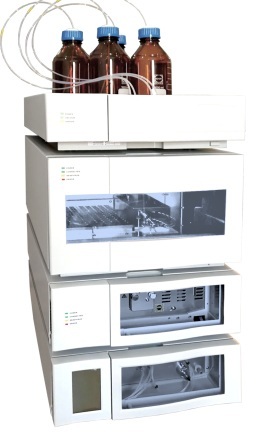
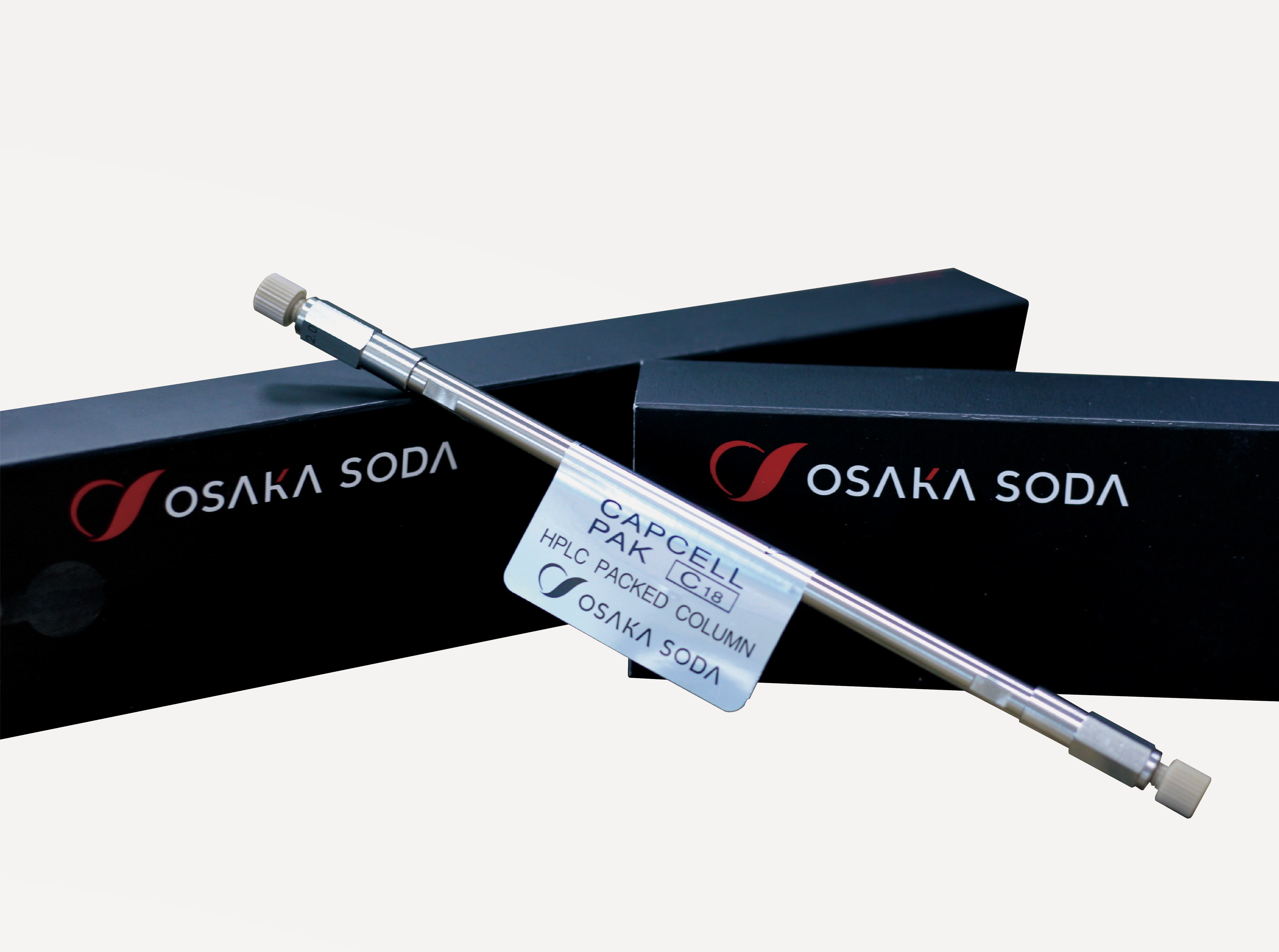
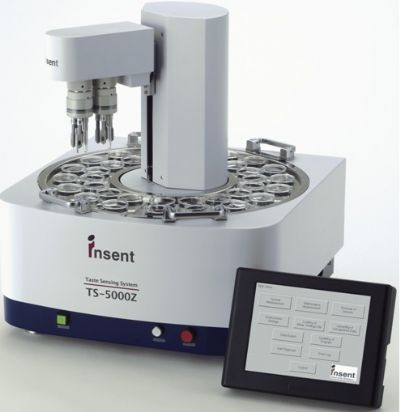

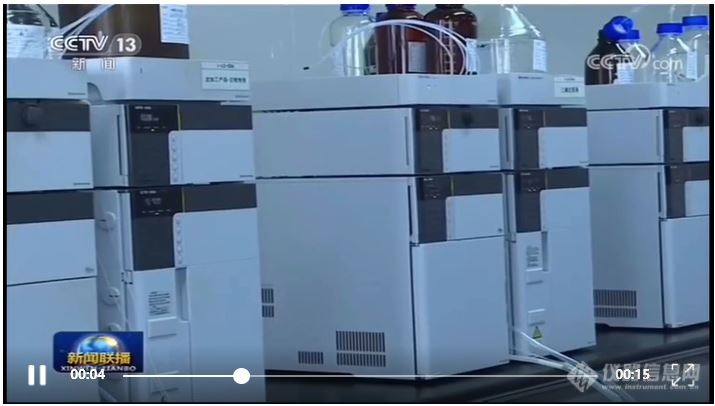


 400-877-2799
400-877-2799
 留言咨询
留言咨询
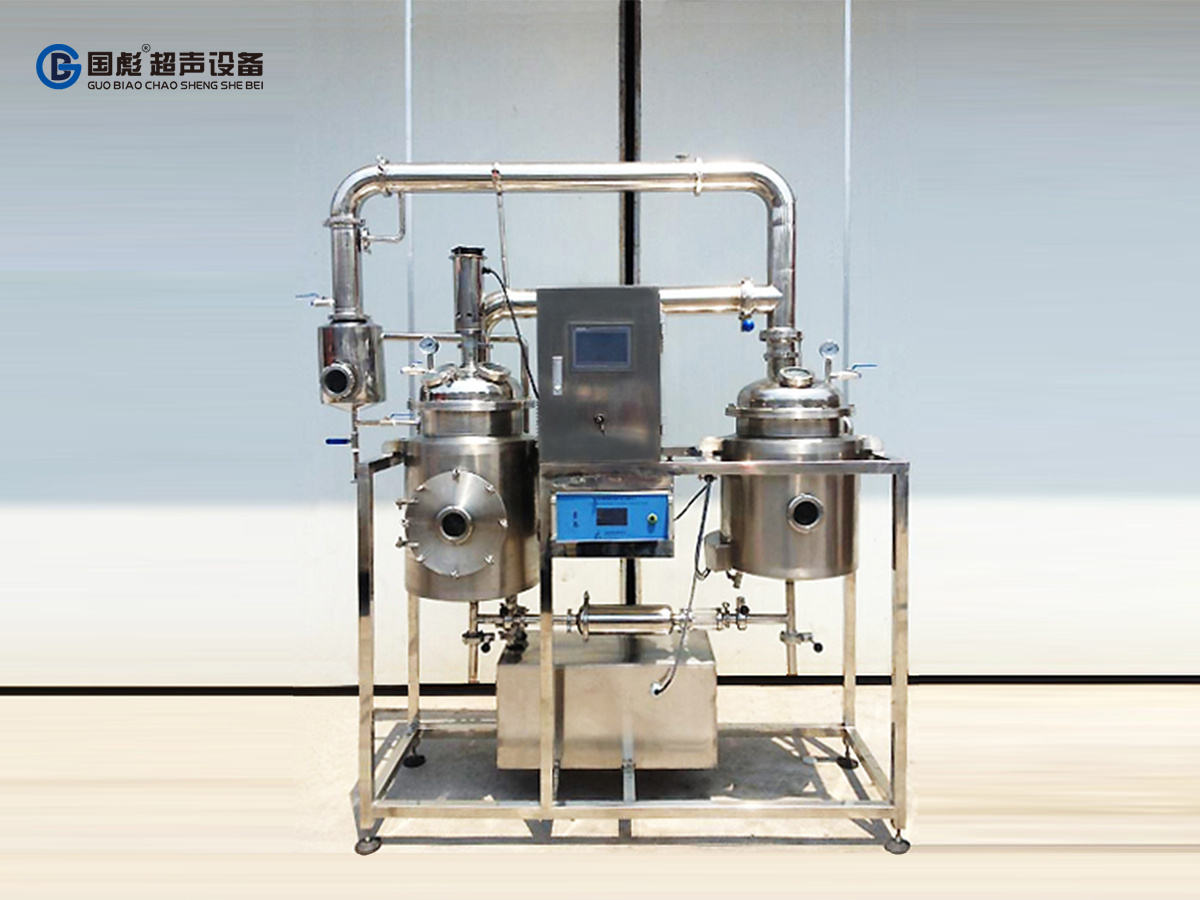
 留言咨询
留言咨询
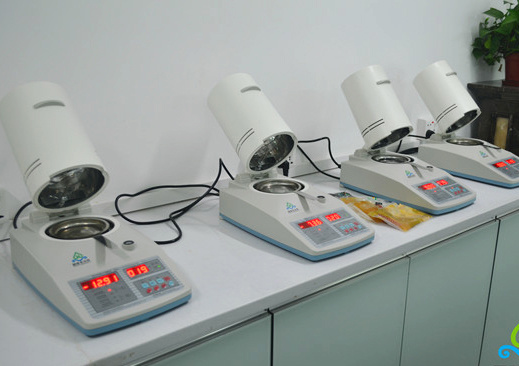
 400-860-5168转2232
400-860-5168转2232
 留言咨询
留言咨询
